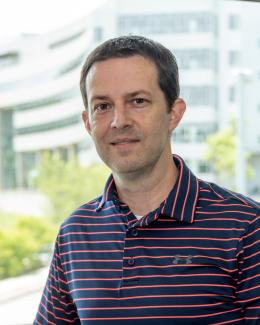
Molecular Biophysics
Multi-scale modeling of molecular processes
The three-dimensional architectures of biological macromolecules determine their biological function. The Molecular Biophysics Group determines the functional mechanisms of biologically relevant molecular systems by employing high-performance computer simulations and data-driven predictive modeling. We have strong interests in incorporating omics information into our modeling, in using supercomputing in our research, and in using simulation to interpret neutron scattering experiments. Members of the Molecular Biophysics group work closely with scientists at the Spallation Neutron Source (SNS) and the Oak Ridge Leadership Computing Facility. Complementary research efforts are conducted through the ORNL-University of Tennessee Center for Molecular Biophysics.
The group focuses on the following areas: modeling and simulation methodologies, bioenergy, mercury biogeochemistry, cell membranes, protein conformational flexibility, and drug and vaccine design. Our drug design efforts have led to the discovery of molecules that are active against many new drug targets. In bioenergy, we have elucidated physical molecular driving forces that stabilize native lignocellulosic plant biomass structures and that govern thermochemical biomass pretreatments. In the area of drug and vaccine design, there is a focus on leveraging machine learning to improve ligand binding prediction and guide advanced sampling techniques to predict protein allostery toward the ultimate goal of developing more specific, targeted therapies. In protein structure prediction, we are leveraging large-scale metagenomic data to guide sampling toward near-native states.

